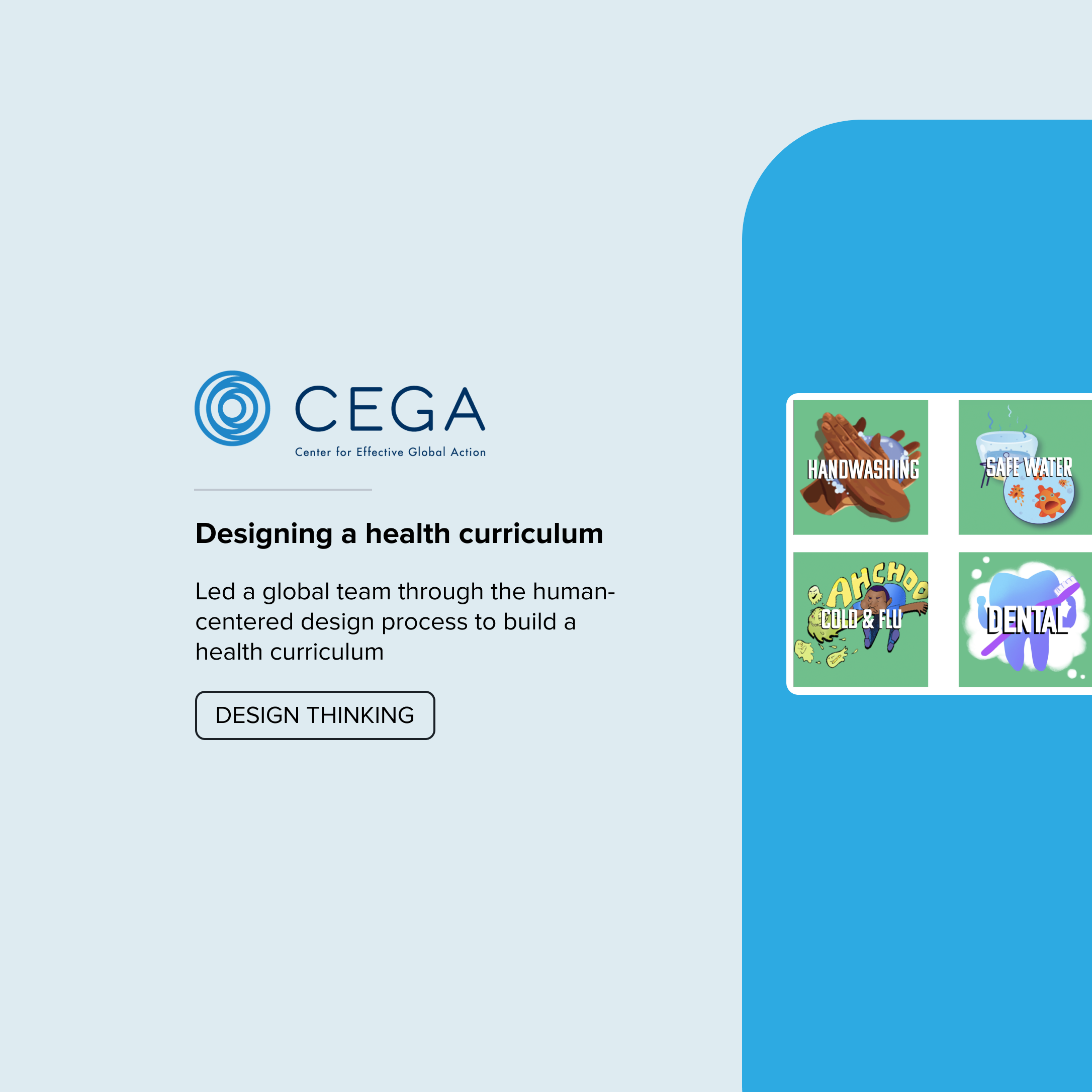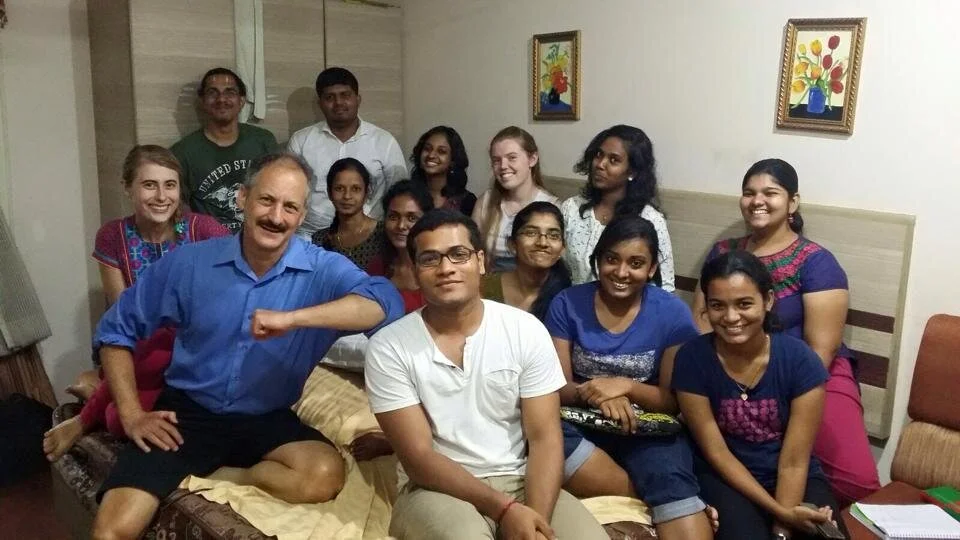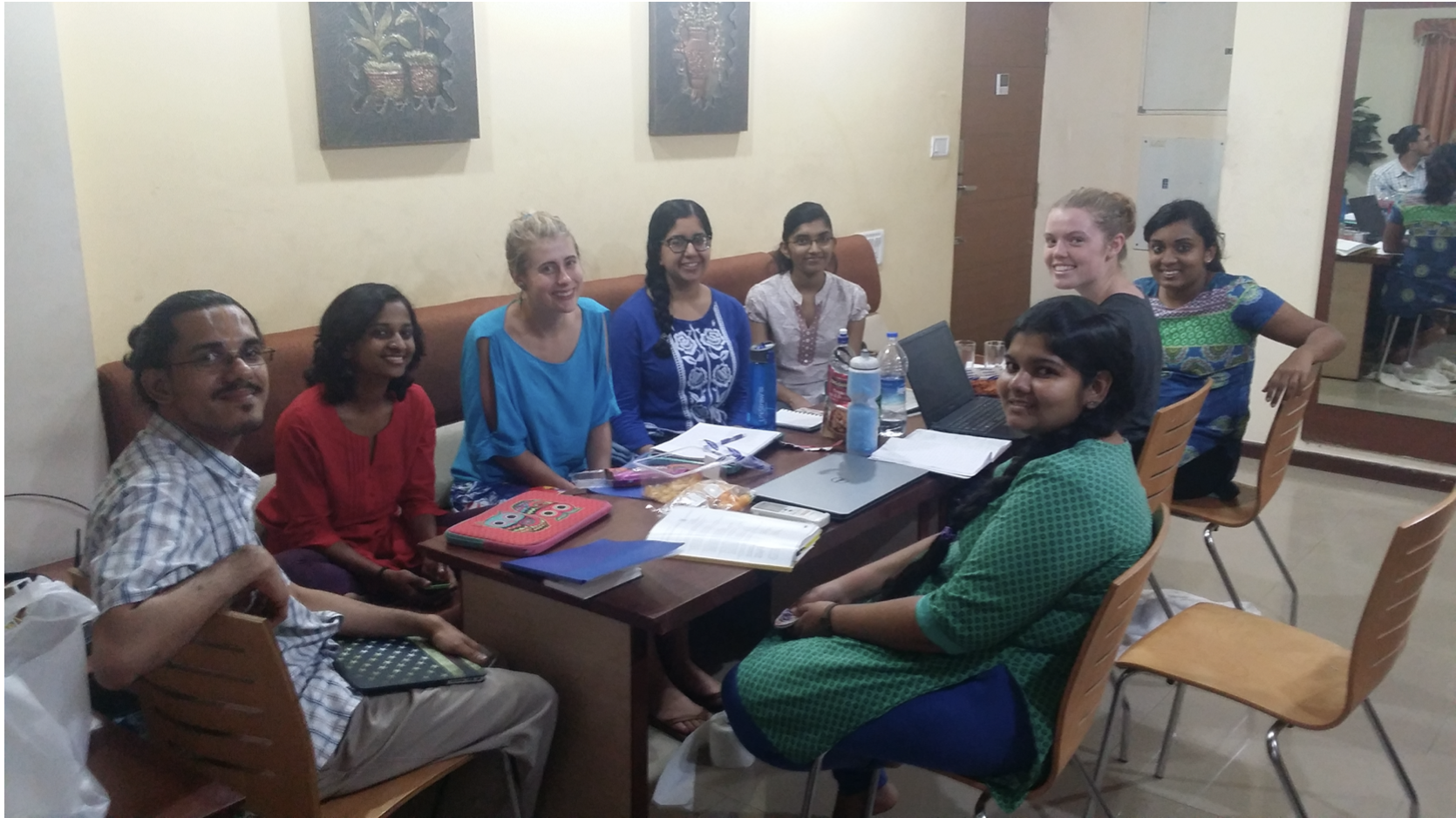
Human-centered design for social change

Human-centered design for social change
Young students in India get sick with diseases that could be prevented with better handwashing. Poor health impedes education, which reduces learning, tests scores, and graduation. There are both supply problems, like not having access to soap and water, and demand problems, like not being taught the importance of handwashing.
To remedy this, I worked with UC Berkeley’s Haas Professor David Levine and the Center for Effective Global Action to found the global team, Hygiene Heroes. I led the Hygiene Heroes team through the human-centered design process to build an interactive health curriculum that teaches handwashing, sanitation, and safe water. I spent two months in Chennai, India in 2015 to understand the needs of impacted primary school students and teachers, generate ideas that turned into prototypes, test these prototypes with students, and make improvements based on feedback.
To create a sustainable model, I built relationships and fostered partnerships with key players like Teach for India, UNICEF, Rotary Club, and Sarva Shiksha Abhiyan (SSA).
The curriculum is still being used throughout schools in Chennai and is continuing to improve.
Launched a post about our efforts on UC Berkeley’s Haas Undergraduate blog.
Responsibilities
Leadership. Led a global team of researchers from UC Berkeley and IIT Madras.
Human-centered design thinking. Brainstormed with impacted students and teachers to build a solution that fits their needs.
Curriculum development. Developed interactive curriculum to teach preventative health.
Launch strategy. Determined strategy for how to launch the curriculum.
International partnerships. Scaled the curriculum by developing international partnerships.


While our main focus was to create more demand for handwashing, we wanted to create some supply side interventions. We came up with the soapy bottle as a low cost alternative for soap.

I led a global team of 15 student researchers from UC Berkeley and IIT Madras through the human-centered design process to build an interactive health curriculum that teaches handwashing, sanitation, and safe water.

We found that the most effective way to change behavior is through interactive styles of learning, meaning less lecturing and more activity-based learning, like stories, games, and songs.

We created an interactive curriculum to promote hand-washing, safe water and sanitation through stories, games and engaging activities.

To create a sustainable model, we started to build relationships and foster partnerships with key players like Teach for India, UNICEF, Rotary Club, and Sarva Shiksha Abhiyan (SSA), which is India’s flagship program for universalization of elementary education.
Problem
The World Bank estimates that handwashing with soap and water reduces diarrheal diseases by 48 percent, preventing over one and a half million children from dying each year.
There are supply problems, like not having access to soap and water, and demand problems, like not being taught the importance of handwashing.
Addressing supply problems
While our main focus was to create more demand for handwashing, we wanted to create some supply side interventions. In India, where the average daily wage is under $2, a huge section of the population simply cannot afford to buy soap for daily use. We came up with the soapy bottle as a low cost alternative for soap.
The soapy bottle is 1-2 rupees of laundry soap or shampoo in a water bottle cleans hands.
Creating a routine to build habits out of using the soapy bottle:
Tightly tie a a soapy bottle to handwashing stations.
Designate a student as the class monitor.
Each time the bell rings for lunch:
Class monitor grabs the soapy bottle.
Class monitor squirts soap on each student’s hands as they leave the classroom.
Students scrub and then rinse.

Human-centered solution for demand problems
Traditional lesson plans that teach handwashing only result in modest behavior changes at best.
We needed to think of new ways to teach preventative health.
With the directorship of UC Berkeley’s Haas Professor David Levine, I led a global team of 15 student researchers from UC Berkeley and IIT Madras to develop standards for teaching new curriculum through rapid prototyping in 5 schools in Chennai.
We partnered with students at IIT Madras to hold brainstorming sessions with impacted teachers close to the problem. We found that the most effective way to change behavior is through interactive styles of learning, meaning less lecturing and more activity-based learning, like stories, games, and songs.
We created Hygiene Heroes to build out an interactive curriculum to teach handwashing, basic sanitation, and safe water.

Story and game development
I helped with both the story and game development. Our games include board games, card games, classroom games and running games such as “germ tag.” Our stories use familiar folk tale characters such as the trickster “Gerry the Germ.” Our activities are very vivid, such as growing bacteria, or involve making something the students can use, like the soapy bottle.
This curriculum works well because health involves conflict between germs and people, and conflict is the basis of most games and stories.
One of my favorite projects was our re-design of Chutes and Ladders. We took the classic game and replaced the chutes with children practicing lousy hygiene and the ladders with children practicing proper hygiene. We used this imagery to reinforce hand washing, water boiling, and latrine usage. The game helped children engage with health practices in a much more memorable way than standard lecturing.
Curriculum
Fundraising to implement curriculum
In 2013 and 2014, we piloted our interactive curriculum concept in Chennai, India and experienced positive results and growth. In 2015, we raised money to send four researchers to Chennai to implement the adapted curriculum in five more schools.
I managed a multi-channel crowdfunding campaign including brand strategy and film production to raise over $4.3K. I drove initiatives from content creation to launch, including all copywriting, film production management, and design.
I drove the investor outreach program, developing go-to-market initiatives and campaign messaging through social media, blogging, and in-person efforts to clearly convey the problem and our approach.
In-country research
With the funds and grants we received, I traveled to Chennai, India for two months in the summer of 2015 to implement the curriculum. I led a team of 15 student researchers from Berkeley and IIT Madras.
In Chennai, I learned the importance of involving the people impacted by the problem in the solution. Partnering with researchers at IIT Madras team was key. They helped source schools and were able to effectively communicate in Tamil with both teachers and students.
I supported our IIT Madras team in structuring our brainstorming sessions and developing the lesson plans. Based on their feedback from working with teachers and students, I iterated on the curriculum and gave them the adapted curriculum to teach at the next session.

Success of curriculum
The curriculum led to short-run behavior changes such as handwashing with soap. We worked with local teachers and students to modify our curriculum repeatedly to better suite users’ needs and local conditions.
Scaling impact through partnerships
I was mentioned in a Blum Center for Economics article:
For Melanie Cernak, who now works as a business development associate at a Silicon Valley firm, her first-hand interaction with the children and their enthusiastic reception of her was fascinating, although sometimes uncomfortable. “Students were attentive and largely would listen to me,” she said. “They wanted to wash their hands because they saw Americans washing their hands. But that is not a sustainable model.”
